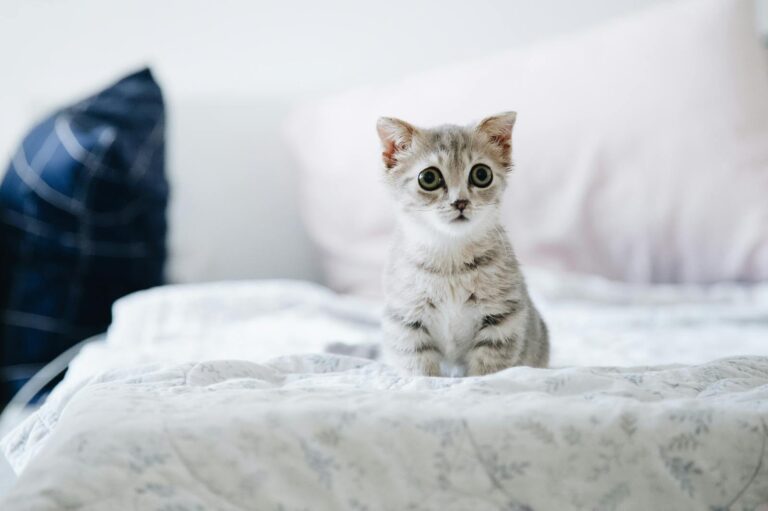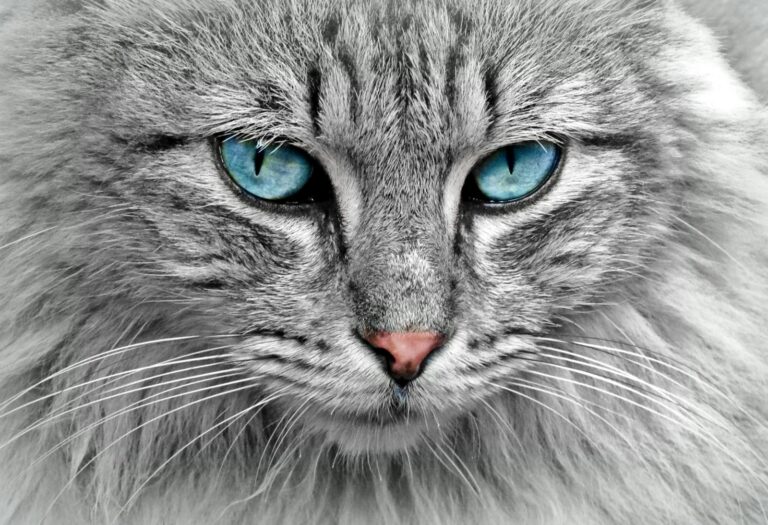How to Create the Ultimate Cat-Friendly Home
Creating an inviting space for your furry companion is essential for their well-being and happiness. In this article, we explore how to create the ultimate cat-friendly home, focusing on design elements that cater to both the comfort of your beloved pet and the aesthetic appeal of your living space.
Designing a Purr-fect Paradise: Understanding Cat-Friendly Home Design
Designing a cat-friendly home starts with understanding the unique needs of felines. Cats are inherently curious creatures and require an environment that stimulates their senses while providing safe spaces to unwind and relax. When considering the layout and design of your home, it’s critical to blend functionality with aesthetics to create a sanctuary where your cat can thrive.
Emphasizing Natural Light and Views
Cats are inherently drawn to sunny spots and vistas, which makes natural lighting an essential consideration in a cat-friendly home design.
- Windowsills
Ensure that your windows are accessible and equipped with sturdy ledges. Cats love to perch and observe their surroundings, so consider adding cushions or blankets to make these areas cozy. If possible, install cat-friendly window screens to ensure their safety while they enjoy fresh air. - Skylights
If you have the opportunity to include skylights in your home, take advantage of this feature. Skylights not only provide abundant light but also allow cats to bask in the warmth of the sun, which helps regulate their body temperature and improves mood. - Open Spaces
An open floor plan can promote exploration. Limit clutter and maintain spacious areas where your cats feel free to roam without obstacles. This allows them to engage in natural behaviors such as sprinting, jumping, and climbing, nurturing their playful spirit.
Incorporating Multi-Level Designs
Vertical space is crucial for a cat’s happiness; therefore, incorporating multi-level designs can significantly enhance their living experience.
- Cat Trees and Shelves
Invest in cat trees that provide multiple levels and platforms, allowing your feline friend to climb to new heights. Wall-mounted shelves can also serve as personal lookout points where they can survey their territory. - Variety of Heights
Different heights in furniture can create a more dynamic environment. Consider utilizing bookcases, cabinets, or even custom shelving to maximize vertical space.
Integrating Play Areas into Living Spaces
Integrative play areas can add functionality and fun to your space.
- Interactive Stations
Designate specific areas in your home as interactive zones for play. Include toys, scratching posts, and climbing structures. Keep in mind that cats have different play styles – some prefer to stalk and pounce, while others enjoy batting at dangling toys. - Safe Zones for Energetic Play
Ensure that designated play areas are free from fragile items or potential hazards, creating a safe environment for energetic play sessions.
In conclusion, designing a purr-fect paradise requires thoughtful integration of natural elements, multi-level designs, and dedicated play areas, ensuring your furry friend feels right at home.
Creating Vertical Territory: Optimizing Space for Climbing and Exploration
Cats are natural climbers, and providing vertical territory within your home can greatly enhance their environment. By optimizing your space for climbing and exploration, you encourage their instincts and help keep them physically active.
The Importance of Climbing Spaces
Climbing is not just a play activity for cats; it’s an innate behavior that serves various purposes.
- Physical Exercise
Climbing promotes physical fitness, helping to prevent obesity and related health issues. It also allows your cat to build muscle and maintain agility. - Mental Stimulation
Providing elevated surfaces stimulates your cat’s curiosity and intelligence. Exploring different levels keeps their minds engaged and reduces boredom.
Creative Solutions for Vertical Spaces
There are many creative solutions for increasing vertical territory in your home that can seamlessly blend with your interior design.
- Rotatable Cat Trees
Choose cat trees with rotatable platforms or modular designs that can be adjusted over time, keeping your cat’s environment fresh and exciting. - DIY Wall Structures
Use wood boards and brackets to create your own climbing wall. Customize the height and placement according to your cat’s preferences and abilities.
Utilizing Existing Furniture
You don’t always need to buy special furniture; sometimes, you can creatively use existing pieces.
- Bookshelves and Cabinets
Utilize the top of bookshelves, cabinets, and even dressers as climbing spaces. Just be sure to secure any fragile decor items out of reach. - Window Ledges
If your windows allow, consider creating ledges or using existing furniture placed near windows to give your cat additional vertical spaces.
By considering these methods and spaces, you can elevate your home’s design while fulfilling your cat’s instinctual need to climb and explore.
Scratching Posts and Sensory Enrichment: Satisfying Natural Feline Instincts
Scratching is a natural behavior for cats that fulfills several instinctual needs. To ensure that your home remains cat-friendly, it’s vital to provide suitable scratching options and sensory enrichment.
Understanding Scratching Behavior
Understanding why cats scratch will help you choose the right equipment and placements.
- Marking Territory
Cats scratch to mark their territory, leaving scent markers behind. Providing adequate scratching posts means less likelihood of them choosing your furniture. - Claw Maintenance
Scratching helps cats shed old claw sheaths, maintaining healthy claws. Offering appropriate scratching surfaces ensures their claws remain in good condition.
Choosing the Right Scratching Posts
Selecting the right scratching post is crucial to meeting your cat’s needs.
- Different Materials
Look for scratching posts made from various materials, such as sisal, cardboard, or carpet. Each material offers a different texture that appeals to different preferences. - Sturdy Base
Ensure that the scratching post has a solid base to withstand vigorous use. A wobbly post may discourage your cat from using it altogether.
Sensory Enrichment through Toys and Activities
Enhancing your cat’s environment goes beyond scratching; sensory stimulation is equally important.
- Interactive Toys
Invest in interactive toys that challenge your cat. Puzzle feeders, laser pointers, and feather wands engage their hunting instincts and keep them mentally stimulated. - Scented Items
Introducing catnip or other safe scents can add sensory enrichment. Catnip-filled toys or scratching pads can entice your cat and make playtime more enjoyable.
In summary, catering to your cat’s natural instincts by providing appropriate scratching surfaces and enriching activities fosters a happier and healthier feline companion.
Safe Havens and Secluded Retreats: Providing Secure Resting Spaces
Cats value their privacy and personal space. Creating safe havens and secluded retreats within your home is crucial for their overall well-being, allowing them to recharge away from daily hustle and bustle.
The Need for Privacy
Creating comfortable hiding spots where your cat can retreat is essential for emotional stability.
- Hiding Spots
Boxes, tunnels, or enclosed beds can serve as excellent hiding spots. These spaces provide security, allowing your cat to feel safe and protected. - Elevated Retreats
Cats often prefer elevated hiding spots where they can observe their surroundings. Build or purchase perches that offer both safety and a vantage point.
Designing Comfortable Resting Spaces
Resting spaces should prioritize your cat’s comfort, especially since they sleep for most of the day.
- Cozy Bedding
Provide soft, washable bedding in each resting area. Consider using materials like fleece or memory foam to accommodate their preference for warmth and support. - Quiet Corners
Seek quiet corners in your home that are away from high foot traffic. This minimizes disruptions, allowing your cat to rest peacefully.
Consider Climate Control
Cats are sensitive to temperature changes, making climate control in their resting areas essential.
- Temperature Regulation
Ensure that their spaces are well-ventilated during hotter months and warm during colder ones. You might consider heated beds or cooling mats as needed. - Avoid Drafty Areas
Position resting areas away from drafty windows or doors. Cats seek warmth and comfort, so shield them from unnecessary exposure to cold breezes.
By crafting secluded retreats that cater to your cat’s need for peace and comfort, you contribute significantly to their mental and emotional health.
Choosing Pet-Safe Materials and Avoiding Toxic Hazards
When designing a cat-friendly home, selecting safe materials is paramount to preventing accidents and injuries. Awareness of toxic substances, household plants, and harmful chemicals is essential in creating a secure environment.
Identifying Toxic Household Items
Many common household items can pose serious risks to your cat’s health if ingested or improperly used.
- Household Plants
Some houseplants like lilies, philodendrons, and azaleas can be highly toxic to cats. Research plant species before bringing them into your home to ensure you do not endanger your furry friend. - Cleaning Supplies
Many cleaning products contain harsh chemicals that can harm pets. Opt for pet-safe alternatives or homemade cleaning solutions to minimize exposure to harmful substances.
Selecting Non-Toxic Furnishings
Choosing pet-safe materials in your furnishings is an essential consideration when creating a cat-friendly home.
- Natural Fabrics
When purchasing furniture or textiles, opt for natural fabrics like cotton, linen, or wool. These materials tend to be more breathable and less harmful than synthetic fibers, plus they can withstand wear from claws. - Wood Selection
If you’re investing in wooden furniture, steer clear of treated woods that may contain harmful pesticides. Instead, choose untreated or sustainably sourced wood.
Implementing Safety Measures
Safety measures go beyond material selection and encompass lifestyle choices and routines.
- Regular Inspection
Regularly inspect your home for potential hazards, such as loose wires or small objects that could be swallowed. Conducting routine checks ensures a continuously safe environment. - Pet-Proofing
Consider baby gates or barriers to restrict access to certain areas, such as kitchens or bathrooms, where potentially dangerous materials may be stored.
By being conscientious about your choice of materials and implementing safety measures, you can create a home environment that prioritizes your cat’s health and safety.
Maintaining Cat-Friendly Cleanliness and Odor Control
Maintaining cleanliness in a cat-friendly home can be challenging, yet it is vital for the health and comfort of both your pet and yourself. Developing a regular cleaning routine and odor control strategies can ensure a pleasant living environment.
Establishing a Cleaning Routine
Establishing a consistent cleaning schedule is essential to keeping your home fresh and comfortable.
- Daily Tasks
Develop a daily checklist that includes tasks such as scooping litter boxes, wiping down surfaces, and rotating toys. This ensures that your cat’s environment is consistently clean. - Deep Cleaning Intervals
Plan deep-cleaning sessions every few weeks to tackle areas often neglected, such as carpets, upholstery, and hidden corners. This prevents dirt buildup and persistent odors.
Litter Box Management
The litter box is a focal point for cleanliness in a cat-friendly home.
- Litter Type Selection
Select the right type of litter that minimizes odors and clumps effectively. Clay-based, crystal, or natural litters all have their pros and cons, but experimenting may help you find the best fit for your household. - Multiple Boxes
Having multiple litter boxes, especially in multi-cat households, is crucial. Rule of thumb: One box per cat plus one extra. This helps reduce territorial disputes and encourages regular usage.
Odor Control Techniques
Implementing effective odor control techniques ensures that your home maintains a fresh ambiance.
- Air Purifiers
Invest in air purifiers with HEPA filters to capture airborne allergens and odors. This can significantly improve indoor air quality and promote a healthier living environment. - Natural Deodorizers
Use natural deodorizers, such as baking soda or activated charcoal, to neutralize odors in litter trays or around the home. Adding these to your cleaning routine is a simple way to maintain freshness.
In sum, maintaining cleanliness and odor control in a cat-friendly home requires a combination of routine cleaning, proper litter box management, and effective odor elimination strategies.
Conclusion
Creating the ultimate cat-friendly home involves a multifaceted approach that considers design, comfort, safety, and hygiene. By incorporating elements that cater to your cat’s natural behaviors, providing secure resting spaces, selecting safe materials, and maintaining cleanliness, you foster a nurturing environment that enhances the well-being of your feline friend. With thoughtful planning and attention to detail, you can create a harmonious sanctuary that both you and your cat will cherish for years to come.







